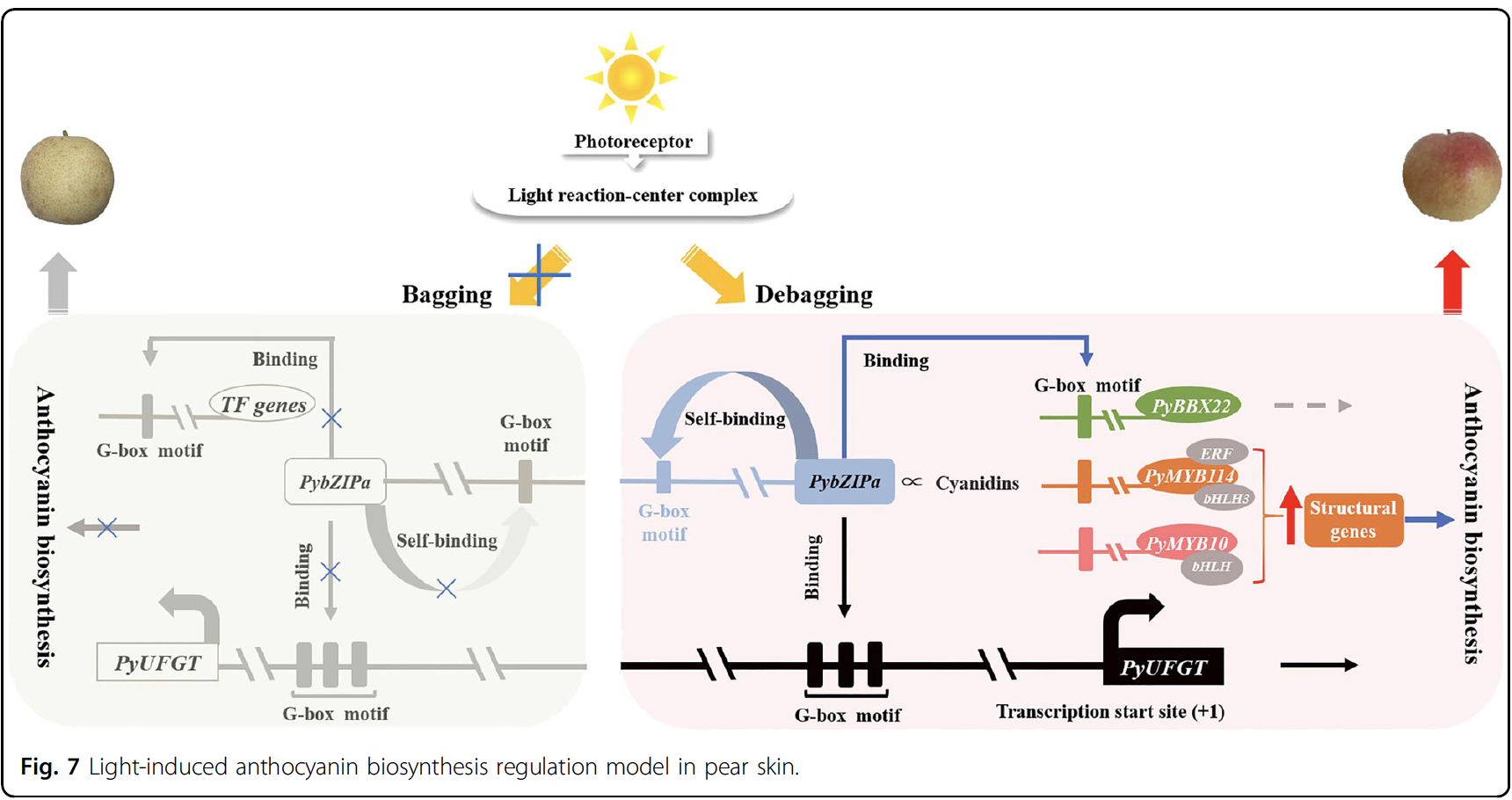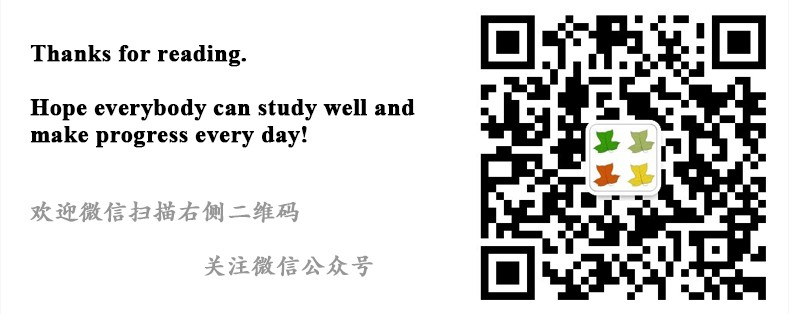博文
Horticulture Research:梨果实中光诱导的花青素生物合成分子调控机制
||
The involvement of PybZIPa in light-induced anthocyanin accumulation via the activation of PyUFGT through binding to tandem G-boxes in its promoter
First author: Hainan Liu; Affiliations: Nanjing Agricultural University (南京农业大学): Nanjing, China
Corresponding author: Jun Wu
To gain insight into how anthocyanin biosynthesis is controlled by light in fruit, transcriptome and metabolome analyses were performed in the Chinese sand pear cultivar “Mantianhong” (Pyrus pyrifolia) after bagging and bag removal. We investigated transcriptional and metabolic changes and gene-metabolite correlation networks. Correlation tests of anthocyanin content and transcriptional changes revealed that 1,530 transcripts were strongly correlated with 15 anthocyanin derivatives (R2 > 0.9, P-value < 0.05), with the top 130 transcripts categorized as being associated with flavonoid metabolism, transcriptional regulation, and light signaling. The connection network revealed a new photosensitive transcription factor, PybZIPa, that might play an important role during light-induced anthocyanin accumulation. The overexpression of PybZIPa promoted anthocyanin accumulation in pear and strawberry fruit as well as tobacco leaves. Dual luciferase and Y1H assays further verified that PybZIPa directly activated the expression of PyUFGT by binding to tandem G-box motifs in the promoter, which was key to differential anthocyanin accumulation in debagged pear skin, and the number of G-box motifs affected the transcriptional activation of PyUFGT by PybZIPa. The results indicate that the light-induced anthocyanin biosynthesis regulatory mechanism in pear differs from that described in previous reports suggesting that a bZIP family member co-regulates anthocyanin biosynthesis with other transcription factors in apple and Arabidopsis. It was found that, in response to light, PybZIPa promoted anthocyanin biosynthesis by regulating important transcription factors (PyMYB114, PyMYB10, and PyBBX22) as well as structural genes (PyUFGT) via binding to G-boxes within promoters. This activation was amplified by the self-binding of PybZIPa to activate its own promoter. Overall, we demonstrate the utility of a multiomics integrative approach for discovering new functional genes and pathways underlying light-induced anthocyanin biosynthesis.

为了研究光如何调控果实中花青素的生物合成,作者对中国沙梨栽培种“满天红”套袋前后进行了转录、代谢组学分析。作者研究了转录和代谢变化,并构建了基因-代谢物相关性网络。花青素含量和转录变化的相关性检测鉴定了1530个转录本与15个花青素衍生物具有较强的相关性,其中排名前130个转录本与类黄酮代谢,转录调控和光信号转导相关。作者通过该网络的构建鉴定到了一个新的光敏转录因子PybZIPa基因,其可能在光诱导的花青素积累过程中发挥重要作用。过表达PybZIPa基因能够促进梨和草莓果实以及烟草叶片中的花青素积累。双荧光素酶和酵母单杂试验进一步验证了PybZIPa蛋白能够直接结合到PyUFGT基因启动子中的G-box基序上,并激活该基因的表达,而PyUFGT基因是去袋后梨表皮上差异花青素积累的关键基因,并且G-box基序的数量直接影响了PybZIPa对于PyUFGT的转录激活。这些结果说明梨中光诱导的花青素生物合成调控机制不同于之前在苹果和拟南芥中报道的bZIP基因家族与其它转录因子一起共调控花青素生物合成的分子机制。在梨中,PybZIPa基因响应于光照,通过结合到PyMYB114、PyMYB10和PyBBX22等重要转录因子以及PyUFGT等结构基因启动子上的G-box基序来调控这些基因的表达,从而促进花青素的积累。此外,PybZIPa能够自己结合到自身的启动子上,促进自身的表达,从而进一步增强了这种转录激活。综上,本文的研究通过多组学联合分析的方法揭示了一个新的功能基因和调控通路作用于梨中光诱导的花青素生物合成。
通讯:吴俊 (http://onlinelibrary.wiley.com/doi/10.1111/tpj.13666/full)
个人简介:1993-1997年,安徽农业大学,园艺专业学士;1997-2000年,安徽农业大学,果树学专业硕士;2000-2003年,山东农业大学,果树学专业博士。
研究方向:主要从事梨的基因组进化、优异资源挖掘与利用、以及分子辅助育种技术等方面的研究。
doi: https://doi.org/10.1038/s41438-019-0217-4
Journal: Horticulture Research
Published date: December 01, 2019

https://blog.sciencenet.cn/blog-3158122-1208656.html
上一篇:the EMBO Journal:UVR8介导拟南芥的侧根发育
下一篇:PNAS:拟南芥中代谢物介导的TOR信号通路调控生物钟
全部作者的其他最新博文
- • Plant Physiology:CsMADS3促进柑果中的叶绿素降解和类胡萝卜素合成(华中农业大学)
- • Molecular Plant:LBD11-ROS反馈调节作用于拟南芥的维管形成层增殖和次生生长(浦项科技大学)
- • Science Advances:根结线虫通过调控植物的CLE3-CLV1模块,促进侵染进程(日本熊本大学)
- • Nature Communications:油菜素内酯参与植物营养生长期转变的分子机制解析(浙江农林大学)
- • Current Biology:光合作用产生的蔗糖驱动侧根“生物钟”(德国弗莱堡大学)
- • PNAS:花同源异型基因在叶中被抑制、花中被激活的分子机制(南卡罗来纳大学)